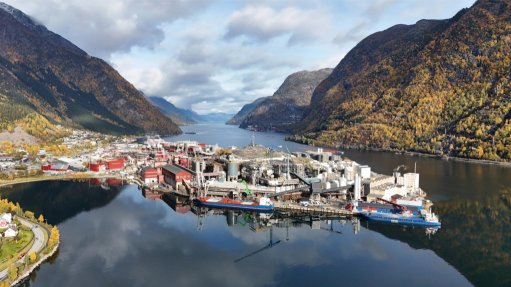
A century after zinc production began in Odda, Norway, fuelled by the region's hydropower development, European metals company Boliden has inaugurated the expanded Odda zinc smelter, ushering in a new era for the facility.
The expansion boosts the Odda plant’s zinc production capacity to 350 000 t/y from its previous 200 000 t/y. This increase positions the Odda plant as Europe's second-largest and the world's most productive zinc smelter, with the facility now having the capacity to produce 1 000 t/y of cast zinc per full-time employee.
The project involved significant infrastructure development, particularly focused on logistics and energy. Key upgrades include the addition of a new roasting furnace, a sulfuric acid plant, and a new cellhouse. Further, the leaching and cleaning plant, along with the foundry, has been expanded and modernized to further enhance production capabilities.
“This is a historic day from several perspectives. We will almost double the production of the world's most climate-efficient zinc. This is zinc that will primarily be used as rust protection in a variety of European applications and thereby be part of a responsible climate transition of our common continent. At the same time, this is a flagship for Norwegian industry to be proud of for another 100 years,” said Boliden President and CEO Mikael Staffas in a statement.
Zinc, the world’s fourth most widely used metal, is essential for protecting steel structures from corrosion. The construction and automotive industries are the largest consumers of zinc, followed by the growing energy sector. Wind turbines, which are often exposed to corrosive environments, are a significant application. Furthermore, zinc plays an important role in agriculture, as a large portion of global agricultural land is zinc-deficient, with its addition promoting higher food production. ![]()